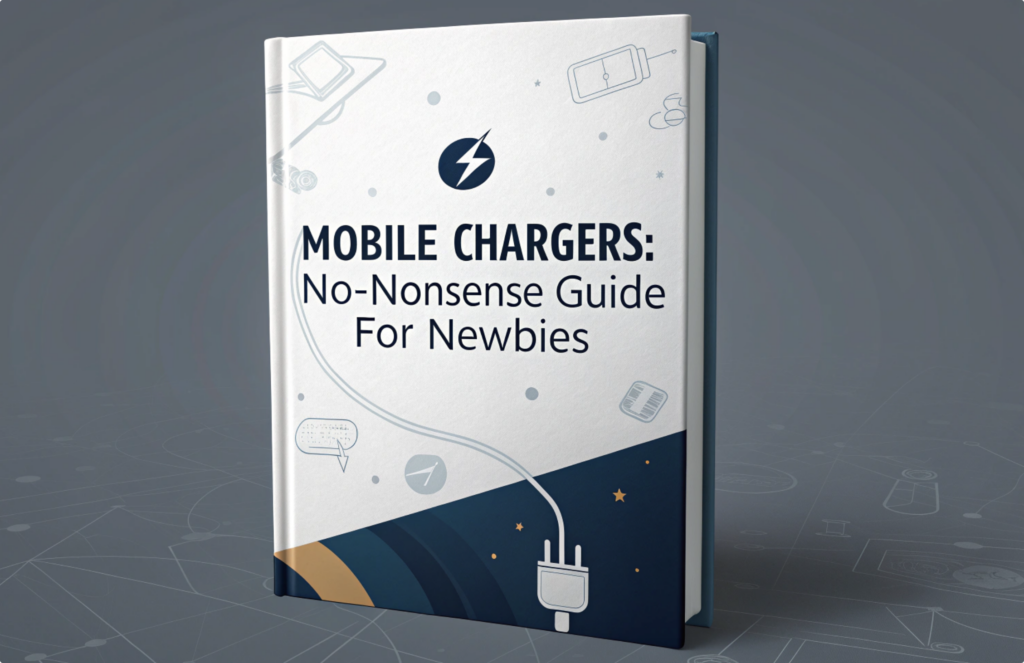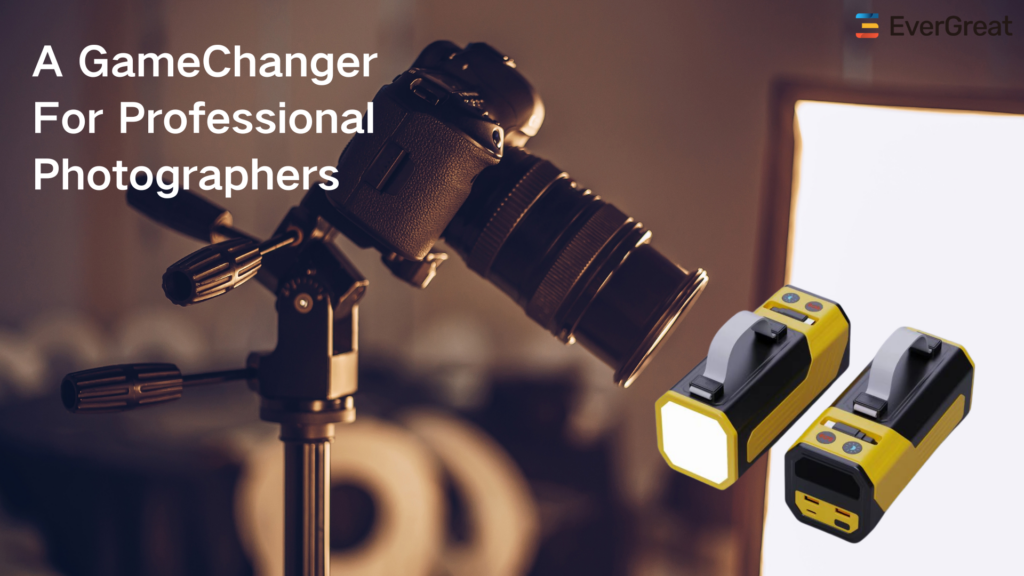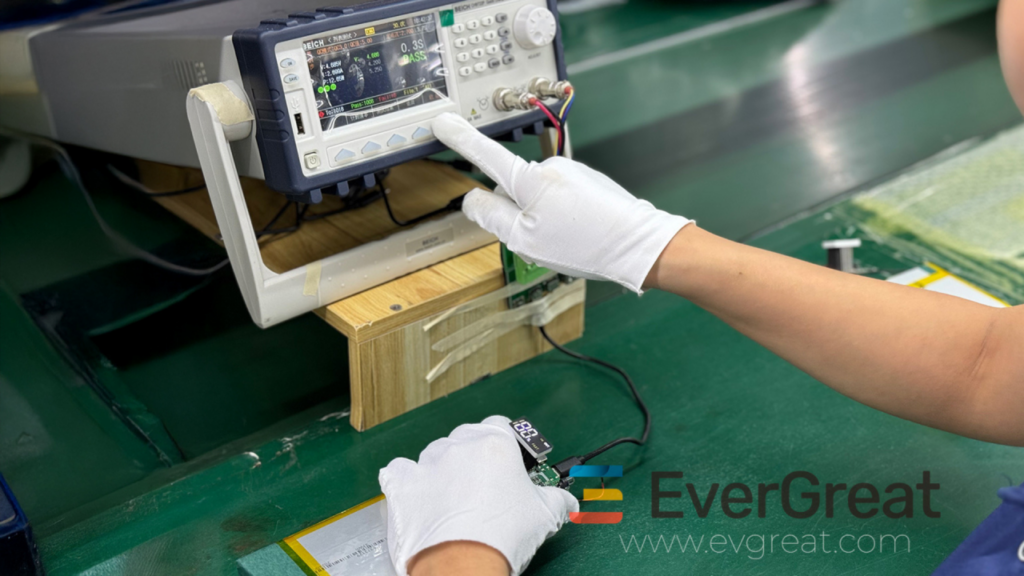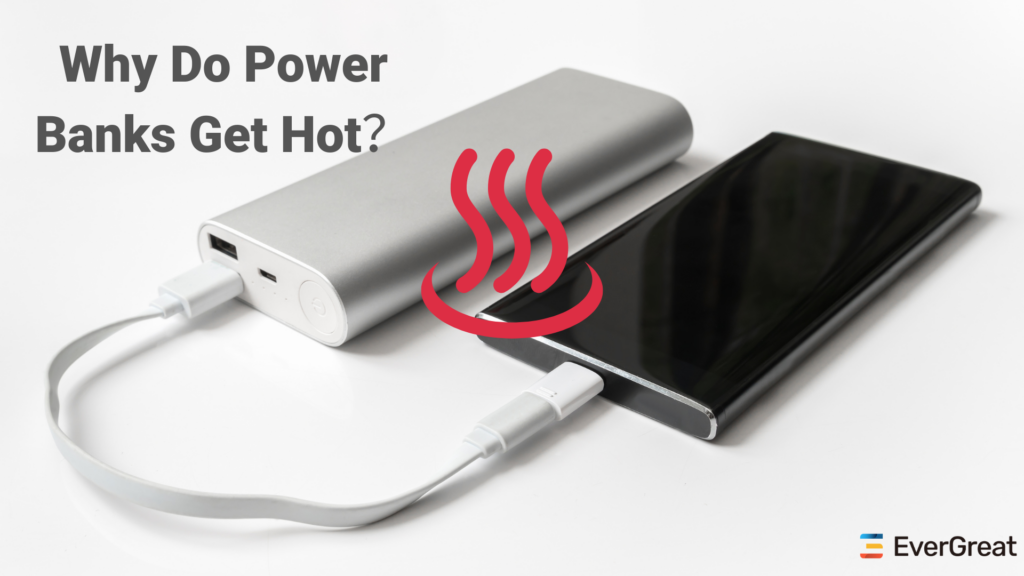📷As cameras and workflows evolve, photographers face growing power demands. Whether during outdoor shoots, drone flights, or video production, reliable portable power is no longer optional—it’s essential. Here’s a deeper look at how power banks are transforming the industry:
1. ✍️ Market Context: The Need for Specialized Portable Power
- The global Power Bank Market reached USD 12.2 billion in 2024 and is projected to grow at 6.1% CAGR, aiming for USD 21.3 billion by 2033. Importantly, this growth is fueled in part by users "requiring extra battery power for cameras"—highlighting the explicit demand from content creators and photographers.
- Meanwhile, the Digital Camera Battery Market, worth about USD 1.5 billion in 2023, is expected to rise to USD 2.3 billion by 2032 (4.8% CAGR). This suggests traditional camera batteries are insufficient for growing needs, pushing photographers to seek alternative power solutions.
2. ⚡ Power Challenges Amplified: Photographers’ Toughest Pain Points
A. Short Battery Life Under Real Conditions
- Mirrorless cameras (Sony A7, Canon R5) realistically offer just 300–600 shots per NP-F battery, or 1–2 hours of video, which falls short for outdoor, wedding, or field shoots.
B. High-Drain Devices Demand High Power
- Devices like external monitors (Atomos Ninja V: \~16W), LED lights (20–100W), drones, and laptops push standard power banks beyond their limits.
C. Frequent Battery Changeover Disrupts Flow
- Constant swapping of camera batteries slows production and reduces creative focus.
D. Underperforming or Unsafe Devices Cause Hassles
- As noted in DJI drone forums, cheap banks often fail to charge drone batteries or cause overheating —leading to field interrupts or equipment damage.
E. On-Site Power Infrastructure Is Often Limited
- Wildlife, landscape, and adventure shoots typically lack AC outlets, making power banks crucial for workflow continuity.
3. 🔧 Power Banks Rising to the Occasion: Real-World Solutions
A. Professional Grade: Large Capacity + Multi-Port PD
- Reddit users cite Anker’s 27,650 mAh/140W models and Omnicharge 38,400 mAh units as “go-to” field gear, proving high-capacity & high-output are now table stakes.
B. Drone-Friendly Fast Recharge
- Battery posts on Phantom and DJI forums confirm that 100W+ power banks (e.g. Goal Zero Sherpa and Jackery Explorer) reliably recharge drone packs and laptops, even in remote locations.
C. Solar-Integrated "Independent Power Kit"
- On long treks, photographers pair solar panels with 10,000–50,000 mAh banks to maintain power autonomy .
4. 🔍 Specs Photographers Need: What to Look For
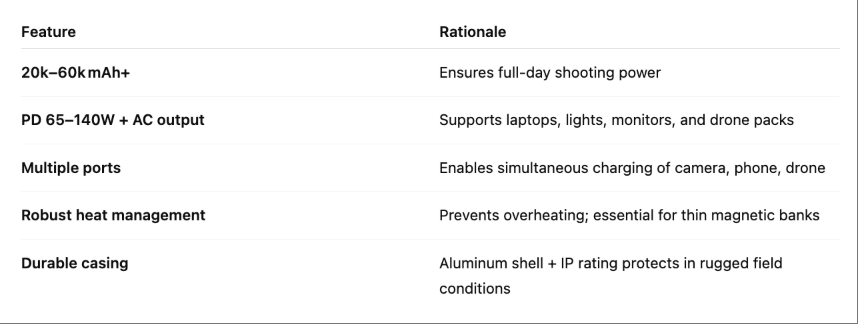
5. 🌱 What the Future Holds: Integration & Hybrid Power
- Higher Power Bank Outputs (200W+): DJI’s Power 1000 prototype supports dual USB-C 140W output and solar recharging —a demo of what professional gear may soon need.
- Magnetic and Wireless Adaptation: As convenience grows, mag-snap banks (MagSafe, Qi 2.0) paired with quick, safe wireless charging will reduce cord clutter.
- Solar + Ultra-Portable Designs: Kits combining foldable panels with ruggedized banks will likely dominate at photography trade shows and outdoor gear lines.
✅ Conclusion: Power Banks Are No Longer Just an Add-On
For modern photographers and videographers, consistent power supply is critical—not optional. With larger capacities, faster outputs, and field-ready designs, power banks are evolving into essential tools that directly enhance creative endurance, workflow efficiency, and production quality.
If you’re a photographer, field producer, or gear supplier interested in exploring professional-grade power banks tailored for the photography ecosystem, I’d be happy to connect, demo units, and discuss integration paths.


